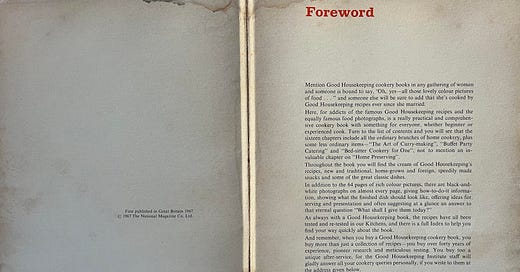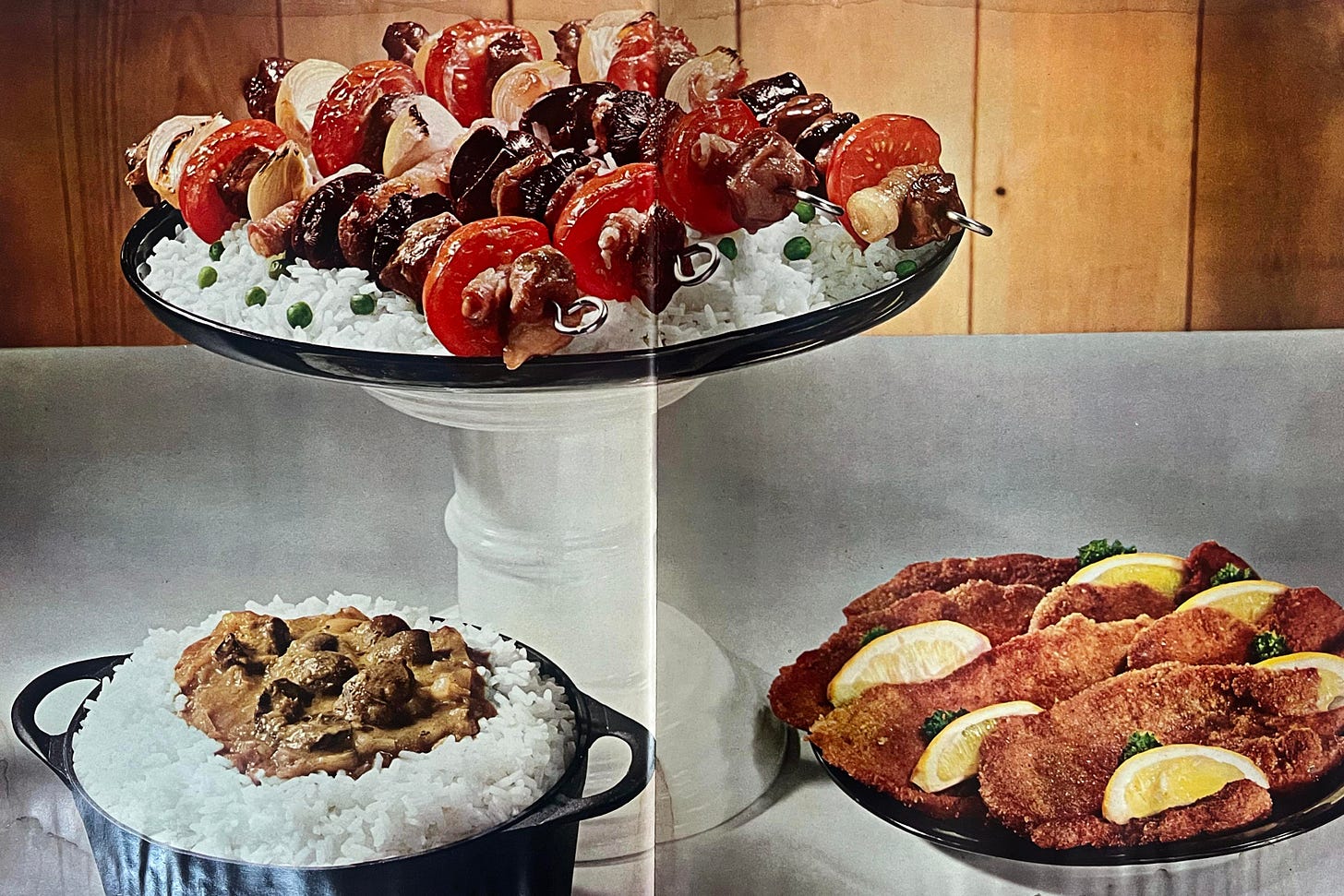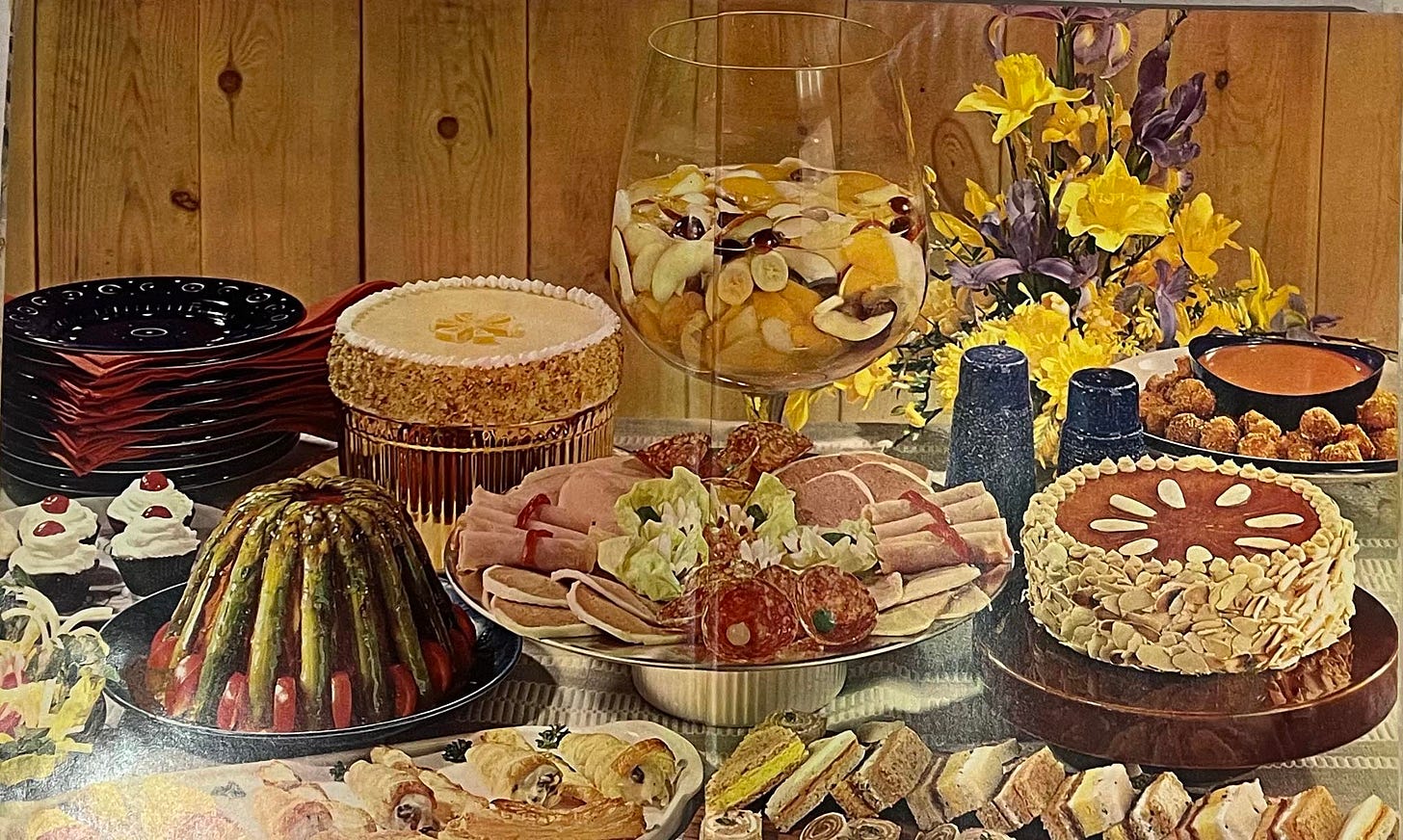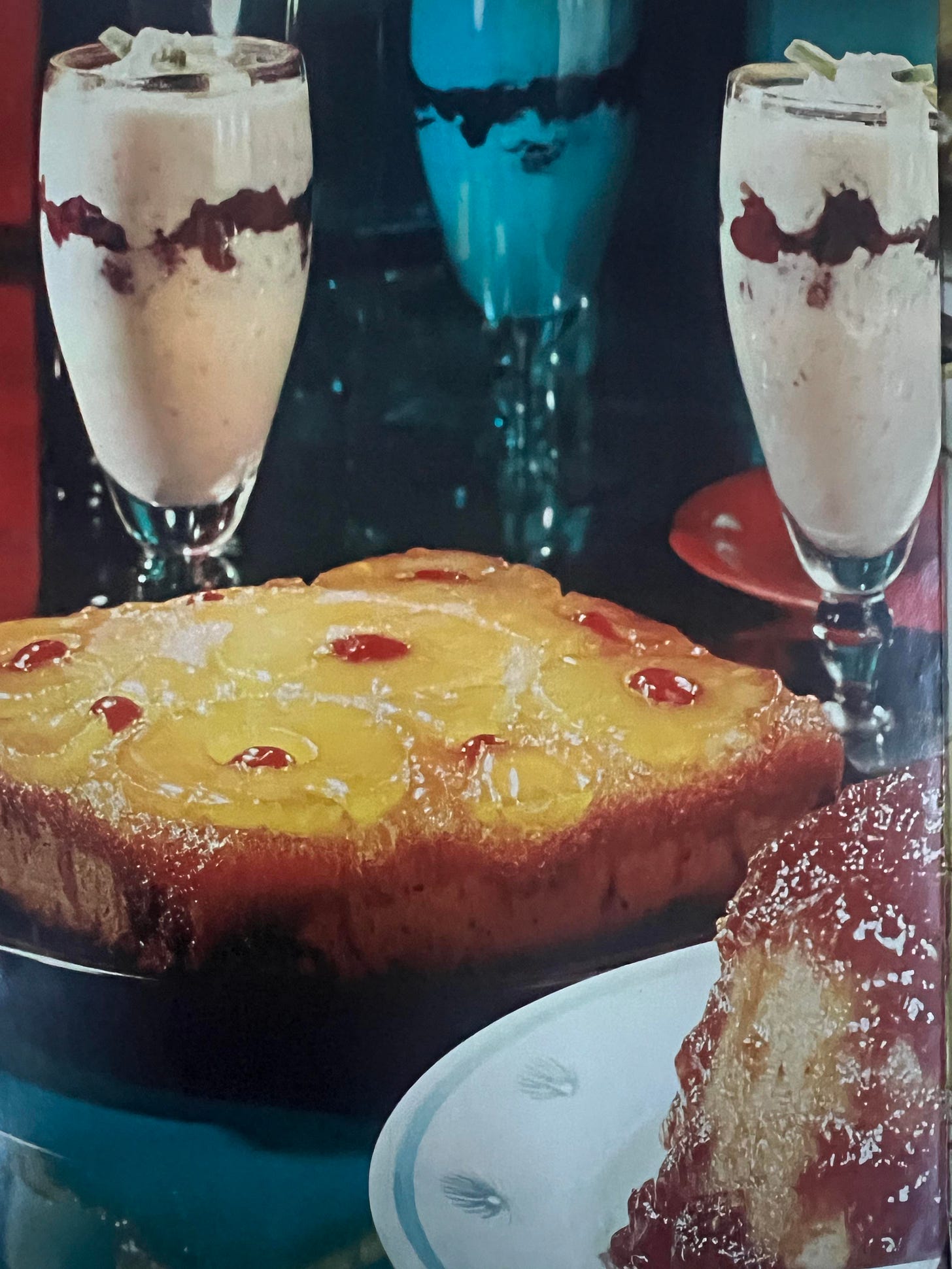I recently liberated a copy of Good Housekeeping Colour Cookery from my mother-in-law’s bookshelf. Published by Ebury in 1967, the forward delightedly states that if you “mention Good Housekeeping Cookery books in any gathering of women someone is bound to say - Oh yes - all those lovely colour pictures of food…”
There are 64 pages of full technicolour food photographs, and they do indeed make a startling impression, but food photography has changed so exponentially since the 70’s that looking at them through a 2024 lens is wild.
It’s hard to look away isn’t it - this was definitely Food Photography in it’s difficult teenage years. Pre Instagram, clean eating and Kombucha this was seen as the inspirational stuff.
Aspic and hefty layering seem to have been the order of the day when trying to impress your guests. This was food designed to be made literally hours before anyone going to eat it, and then enjoyed in a room thick with cigarette smoke while wearing polyester. Looked at through the lens of the times, it is bang on trend in it’s unapolegetic madness.
Fashion heavily influenced the colours and props in the images. There was no shunning of shiny in the 70’s; “Pineapple Uside Down Cake? check. Tapioca in tall glasses? check. Blue Mirror to make it look like it’s all ready to Disco? Marvellous idea Edmund”
Busy backgrounds and shots brimful with food were a hallmark of 70’s food photography. There is so much in this photograph that your eye can’t settle on any one thing.
A celebration of food after a time of rationaing
1970’s food was essentially an unapologetic experiment in culinary chaos. Wierd and unaturally colourful, but despite the dodgy white balance in all these images, there is a real sense of celebration and abundance, a perfect snapshot of the times that they were taken in.
After the war, post rationing, food in the UK was still pretty bland and brown. The decades between 1954 and 1974 saw a dramatic turning point in British eating habits, due to a heady combination of three things:
The late 1960s saw a boom in the British economy and a dramatic rise in the standard of living. Real disposable household income per head was 25% greater by the end of the 1960s than it was at the end of the 1950s
The first package holidays to Europe started to appear in the late 60’s, which meant many more people could afford to travel abroad, bringing Italian, Spanish and French food into fashion. Previously, Olive Oil was something you bought in the Chemists to remove your ear wax ..
And although there were Indian restaurants in the UK as far back as 11810, immigration from India and Pakistan peaked in the late 60’s, and the UK’s love affair with the gateway curry of chicken tikka masala began.
My memory of the late 70’s is being sat at the top of the stairs in my PJ’s listening to the chatter and clink of my Mum and Dads dinner parties - the pinacle of which would be for New Years Eve, which in our house always ended in a rowdy conga down the street. Pale ale or port and lemon would be on offer, and for the truly brave there would be my Dad’s homemade banana wine. But the best bit about those nights as a kid was being allowed to make the pineapple and cheddar cheese hedgehog – the height of sophistication, and something I may well bring back for a rerun this year. Unlike the Banana Wine, which is a recipe that remains a secret kept by my still sprightly 90 year old Dad, perhaps suggesting that it is indeed a better longevity potion than Kombucha?
I hope this has been useful, and do message me with any questions, I’m always happy to help.
Thanks for reading, I very much appreciate your support, liking and sharing the content from my Substack really makes a difference and will help me to keep writing!
The first purely Indian restaurant was the Hindoostanee Coffee House which opened in 1810 at 34 George Street near Portman Square, Mayfair. The owner of the restaurant, Sake Dean Mahomed was a fascinating character. Born in 1759 in present-day Patna, then part of the Bengal Presidency, Mahomed served in the army of the East India Company as a trainee surgeon. He later travelled to Britain with ‘his best friend’ Captain Godfrey Evan Baker and married an Irishwoman. Guests would sit in custom-made bamboo-cane chairs surrounded by paintings of Indian scenes and enjoy dishes “allowed by the greatest epicures to be unequalled to any curries ever made in England”. There was also a separate smoking room for hookahs.












Enjoyed this so much 🙂
We're still making pineapple and cheddar cheese (and chipolata and pickles) hedgehogs for the family Boxing Day parties! (That's Manchester for you!)